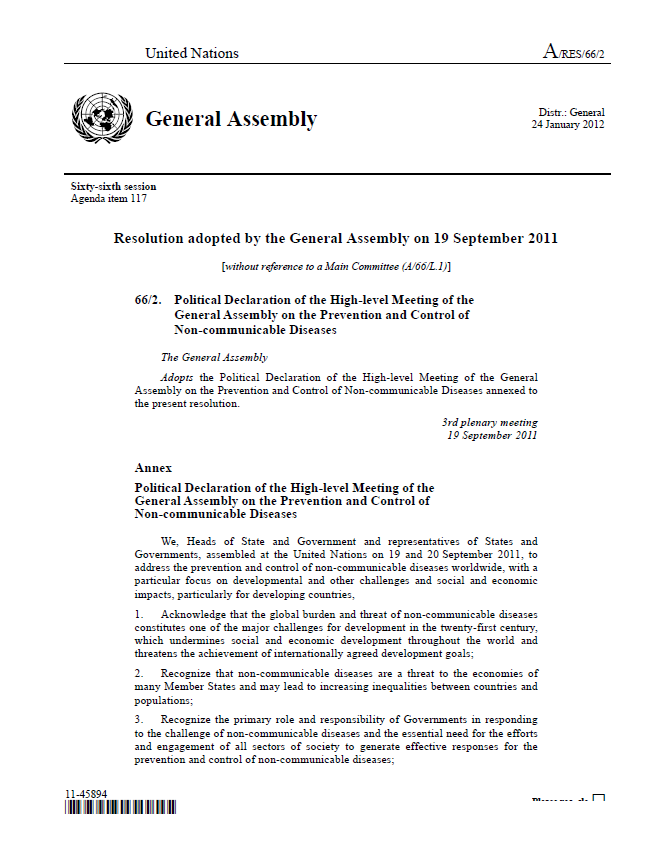2011 Political Declaration of the HLM on NCDs
Analysis of precedential value
This declaration is the product of the UN High-Level Meeting (HLM) on noncommunicable diseases in September 2011; it was adopted by the UN General Assembly without a general vote that same month. The General Assembly is the preeminent governing body of the UN system and consists of all 193 UN Member States.
The UN press team described its presentation at the HLM as follows: “world leaders joined Health and Development Ministers in the consensus adoption of a wide-ranging Political Declaration on the prevention and control of non-communicable diseases at the opening of the General Assembly’s first ever summit on the deadly chronic illnesses.”
Used as precedent
intersectionality, key and vulnerable populations
“Note with concern that the rapidly growing magnitude of non-communicable diseases affects people of all ages, gender, race and income levels, and further that poor populations and those living in vulnerable situations, in particular in developing countries bear a disproportionate burden and that non-communicable diseases can affect women and men differently.” (paragraph 14)
gender norms and stereotypes, key and vulnerable populations
“Express deep concern that women bear a disproportionate share of the burden of care-giving and that, in some populations, women tend to be less physically active than men, are more likely to be obese and are taking up smoking at alarming rates.” (paragraph 15)
key and vulnerable populations
“Acknowledge also the existence of significant inequalities in the burden of non-communicable diseases and in access to non-communicable disease prevention and control, both between countries, and within countries and communities.” (paragraph 17)
“Pursue and promote gender-based approaches for the prevention and control of non-communicable diseases founded on data disaggregated by sex and age in an effort to address the critical differences in the risks of morbidity and mortality from non-communicable diseases for women and men.” (paragraph 45(e))
societal enablers
“Encourage the development of multisectoral public policies that create equitable health-promoting environments that empower individuals, families and communities to make healthy choices and lead healthy lives.” (paragraph 43(a))
